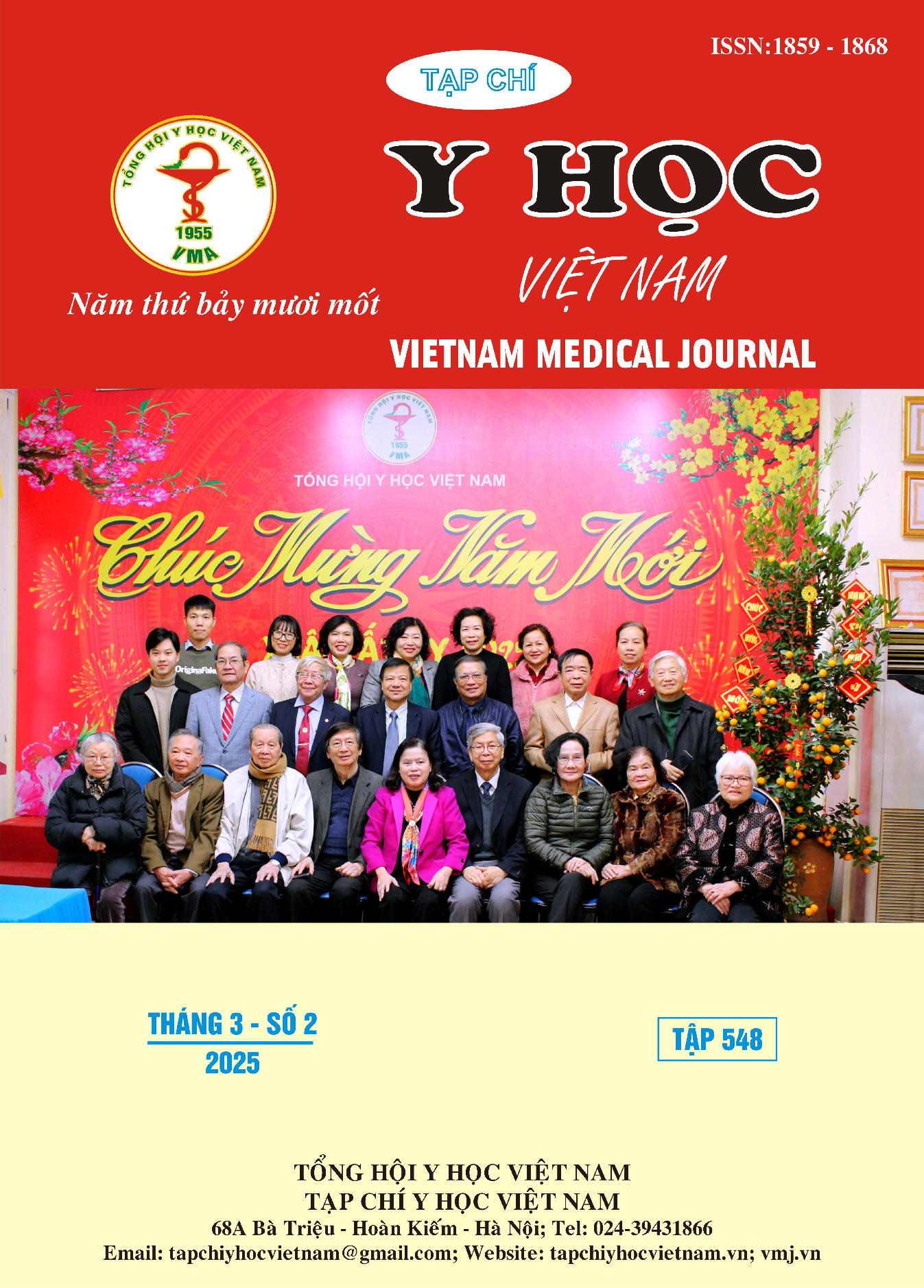EVALUATION OF THE THERAPEUTIC SUPPORT EFFECT OF ELECTROACUPUNCTURE IN THE TREATMENT OF MIXED DISORDER OF ANXIETY AND DEPRESSION IN THE FIRE-BURNING TYPE
Main Article Content
Abstract
Objective: To evaluate the therapeutic support effect of electroacupuncture in the treatment of mixed disorder of anxiety and depression in the stagnation of qi produce the fire-blurring type. Research method: The research design was conducted according to the prospective method, purposeful sampling, clinical intervention, comparison before and after treatment, and control. In the study, we selected a minimum sample size of 60 patients. divided into two groups. Group I (Control group): Treatment with the traditional medicine regimen. Group II (Research group): Treatment with the western medicine + Electroacupuncture regimen. Results: Regarding the level of anxiety relief according to the HARS scale, the intervention group had 58.3% of patients with good relief without anxiety disorders, 48% of patients with relief and 1.7% of patients with no relief. In the control group, the number of patients with good relief was 45%, the average relief was 40% and the number of patients with no relief was 15%. Regarding the level of relief according to the HDRS scale, the intervention group had a good level of relief of 60%, the average level of relief was 35%, and the number of patients with no relief was 5%. In the control group, the good level of relief was 46.7%, the average was 35% and the number of patients with no relief was 18.3%. Conclusion: The electroacupuncture method is effective in supporting the treatment of mixed anxiety disorder and depression in the stagnation of qi produce the fire-blurring type.
Article Details
Keywords
Anxiety, Depression, Electroacupuncture
References
2. Phạm Thị Thu. (2017). Đặc điểm lâm sàng trầm cảm, lo âu ở bệnh nhân bệnh tim thiếu máu cục bộ mạn tính. Tạp chí y – dược học quân sự, 42(1), tr. 89-91.
3. World Health Organization (WHO). (1992). The ICD 10 (pp. 116 - 117). Geneva.
4. Trần Hữu Bình (2003). Nghiên cứu rối loạn trầm cảm ở những người có bệnh lý dạ dày - ruột thực thể và chức năng. Luận án tiến sĩ y học, Đại học Y Hà Nội.
5. Hardeveld F, S. J. (2014). Increased cortisol awakening response was associated with time to recurrence of major depressive disorder. Psychoneuroendocrinology , 50: 62–71. Kendler. (1987). Symptoms of anxiety and symptoms of depression: same gene, different
6. Đinh Đăng Hòe. (2000). Rối loạn lo âu. Bài giảng chuyên đề tâm thần học tr 28 - 31. Đại học Y Hà Nội.
7. Bộ Y tế (2020). Rối loạn hỗn hợp lo âu và trầm cảm. Hướng dẫn chẩn đoán và điều trị một số rối loạn tâm thần thường gặp. tr 136 – 140. Nhà xuất bản Y học
8. Bộ Y tế (2015). Điện châm. Hướng dẫn quy trình khám bệnh, chữa bệnh chuyên ngành Châm cứu. tr 10-14. Nhà xuất bản Y học.
9. Bộ Y tế (2020). Hướng dẫn chẩn đoán và điều trị bệnh theo y học cổ truyền, kết hợp y học cổ truyền với y học hiện đại, tập 1. Nhà xuất bản Y học
10. Nguyễn Kim Việt. (2009). Lâm sàng và điều trị các rối loạn lo âu. Bộ môn tâm thần học, Đại học Y Hà Nội.


